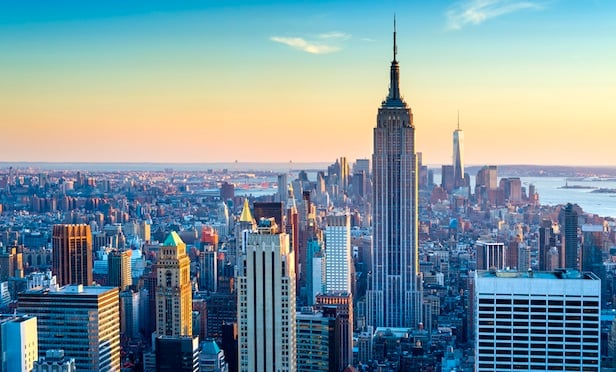 New York City's economy will continue to grow in coming years, but just not at the same elevated rate.
New York City's economy will continue to grow in coming years, but just not at the same elevated rate.
NEW YORK CITY—The New York City Independent Budget Office in a sweeping 24-page fiscal outlook report states that the Amazon HQ2 project in Queens will only serve to moderate the expected slower job growth it predicts in the city in coming years.
The IBO stressed in the report that it does not expect the economic expansion, which began after the 2008-2009 expansion to end, it also does not foresee a steep slide through at least 2022.
“While we see job growth that is roughly one-third the record levels of a few years ago and tax revenue that continues to grow steadily, but not robustly, the city's fiscal outlook remains guardedly positive over the next three-and-a-half years,” the IBO predicts.
The city is expected to end the current fiscal year with a surplus of $400 million and it expects a “manageable” shortfall of $2.1 billion for fiscal year 2020. It predicts similar gaps for 2021 and 2022.
In terms of the local economy going forward, the IBO states in the report, “Looking at the local economy, which is now nine years into a record expansion, New York City employment growth has slowed in 2018 and is expected to weaken further in the years through 2022. We expect weaker job growth to be accompanied by slower growth in wages and personal income and continued weakness in the markets for commercial and (especially) residential real estate.”
The IBO continues, “Amazon's HQ2 project, which we assume will roll out as scheduled, moderates but does not reverse the trend toward slower job growth.”
New York City added 19,900 jobs through the first seven months of this year, but more than doubled that amount during the August-October period (39,100 jobs). The IBO expects the year-end job growth to be approximately 64,000 jobs, down sharply from the average 97,000 jobs added to the city's workforce per year over the previous eight years.
Near-term economic growth is expected to lower the city's unemployment rate from 4% in October 2018 to an average of 3.7% in 2019. Growth sectors such as the health care, education and professional and business services industries will account for the lion's share of aggregate wage growth in the city.
The report cites a number of risks, including the volatility on Wall Street and in Washington, DC and overseas, as the driving force behind its guarded outlook, as well as the costly problems facing the city in the form of needed repairs and improvements to public housing, public hospital and its transit system.
The IBO does not assume any near-term change to federal fiscal policy to reduce the ballooning federal deficit and assumes that the Federal Reserve will be successful in raising interest rates and unwinding quantitative easing.
However, the IBO states that the geopolitical climate, which has worsened since the release of the report earlier this week, “poses a major risk.” The report cites a possible escalation of the trade war with China as one possible risk going forward.
Other interesting data points released in the report include:
• The IBO forecasts tax revenue of $60.8 billion in 2019 growing to $67.9 billion in 2022, with much of the increase attributable to the property tax, which is expected to grow at an average rate of 5.5% annually over that period. After an extraordinary 2018, growth in personal income tax revenue will fall off to a more typical pace.
• The IBO's tax forecast exceeds the de Blasio Administration's by $558 million in 2019, $1.0 billion in both 2020 and 2021, and $1.6 billion in 2022, with much of the difference attributable to the outlook for property and the income taxes.
• The IBO projects that total city spending will grow from $90.6 billion this year to nearly $100.5 billion in 2022, an average annual rate of 3.5% and just below the 3.7% rate of growth we project for tax revenues.
As in past years, much of the growth in city spending is concentrated in just a few areas of the budget. The IBO estimates that the cost of health care for city employees will rise from $6.7 billion in 2019 to $8.1 billion in 2022, an increase of approximately 7.0%.
The IBO projects city spending will exceed the amount budgeted by Mayor de Blasio by $205 million this year and $363 million next year. Much of the difference relates to the IBO's estimated cost of providing shelter for the homeless and overtime expenses for police and firefighters.
© Touchpoint Markets, All Rights Reserved. Request academic re-use from www.copyright.com. All other uses, submit a request to [email protected]. For more inforrmation visit Asset & Logo Licensing.







